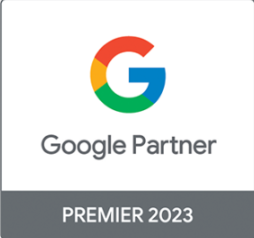Google Ads in Simple Terms
Google offers a great set of tools to set up, run, manage and optimise marketing campaigns. From beginner to advanced users, there are plenty of options, campaign types, and objectives to choose from. This is partly the problem. Too many choices, too many different campaign objectives. So, it’s easy to get lost or make a mistake.
This is the first in a series of guides to help you better understand the Google Ads platform, so let’s start with the basics. What are the campaign types and when should you use them?
Google Search
This is normally the first campaign type that you should try. Essentially its text ads like the example below, that show on the Google Search Results page when users search for specific keywords.

It is your choice to choose which keywords you wish to pay, to appear for, and how narrow or broad you want those keywords to be. For example, if you sell double beds online, you may want to bid on any of the following keywords:
- Beds for sale online
- Double bed for sale online
- Beds
- Double bed special offers
Some of the above are generic and some are more specific. Generally, you want to start by targeting the more specific keywords that relate to your products or services.
These campaigns are easy to set up, all you need to do is choose the keywords that you wish to go after and follow the user-guided instructions to add your ads and apply your desired budget.
Google Display
Display ads are visual adverts that appear on other people’s websites. See one example below:

With these types of adverts, you are generally trying to entice new users to your website, think of it as an awareness campaign. The key is identifying which audiences to target. The Google Ads platform is good at suggesting relevant audiences based on looking at your website. The trick however is to choose how broad or specific you wish to be in that targeting. Google offers a variety of different audience types. For example:
Affinity broad interests like people who like watching television
In-Market specific people looking for a product service of solution, like buying a type of car
Custom-Affinity like in-market but more specific, so someone looking for a new SUV Ford car
Generally speaking, unless you have large budgets and want mass brand awareness, you would most likely want to start at the bottom of the list above i.e., people who are actually looking for things specific to your products or services. As in all cases, Google Ads will guide you through the process and even help you design your banners with simple tools to upload logos and images.
Google Discovery Ads
Discovery ads or campaigns are relatively new. They are similar to the Google Display Ads described above but are slightly different in the number of ad formats that get produced and where those ads get displayed. The process for creating the campaigns and ads is very similar though. The only difference is that the audiences you select are targeted in more places not just on other people’s websites. For example, they will also appear in Google Mail and YouTube.
Google Remarketing
Remarketing are the ads that follow you and serve you content after you have chosen to interact with a brand. We are all used to seeing pairs of shoes that we looked at (but didn’t purchase) being re-served back to us on adverts, well that is remarketing.
Each of the campaign types described here has the ability to be remarketing campaigns. In each campaign type, you would just look for an extra type of audience to target. That is normally under a section called: How People Interacted With Your Business, there you will hopefully see a list of users that have visited your site before. If you do not see any audiences under this section, it means that your Google Analytics and Google Ads accounts have not been linked and are not sharing data successfully. If you are stuck in setting this up, either google how to set it up or you can ask somebody from the Algorithm team to assist you.
Google Shopping
In the Google Search Engine, you will see a Shopping Search function. This is where specific products can be promoted with an image above the regular search results. To enable this campaign type, you need a product feed. To keep things simple, think of this feed, as an Excel Sheet that contains details of the products that you sell. The columns in the “spreadsheet” would be things like the following:
- Product Name
- Product Code (SKU)
- Product Image Link
- Product Description
- Product Price
These feeds (which come in various forms) need to be uploaded into a Google Merchant Centre. We will explain more about this in the coming few weeks.

Google Smart / Dynamic Display
If you have a product feed (see above) you have the ability to link your Google Merchant Centre with your Google Ads account.
From here you can create Dynamic SMART Display ads. These are ads that contain your logo but also link with your product feed. Anyone that has interacted with your brand will get served the ad but specifically with the products that are ones they looked at or similar to the ones they looked at, see the example below:

Conversions & User Experience
It does not matter how much you spend; it’s wasted if your clicks don’t turn into leads or revenue.
Before starting any Google Ads campaigns start by asking yourself a hard question. Q. Is my landing page, designed to make it easy for people to take action?
Those actions may be filling out a lead form or adding a product to an e-commerce basket.
It may well be a good idea to ask a few other people what they think, as you may be too close to the design and layout and may just assume that user sign-posting and the call to actions are ok.
Once You Are Up & Running
Take time to review the recommendations that Google Ads provides. They are nearly always useful pointers on how to improve the performance of your campaigns.
Give the campaigns enough time to get some momentum, think of it this way. Q. Has the keyword or ad or campaign had enough clicks to make a call on whether you should have seen a conversion yet?
We wish you the best of luck with new or existing campaigns. If you need help or an audit of your current campaigns, Algorithm can perform an in-depth analysis to help you identify how you can improve your campaign performance. Read more about our paid media audits here
Article Author : Simon Lloyd




